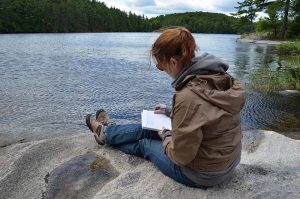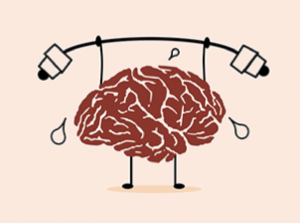Sensory Grounding Free-Write
Sensory Grounding Activity.pdf

Description of the Resource:
This handout includes instructions for a sensory grounding activity and space for the student to free-write about their experience. The sensory grounding exercise is best to be done in a natural space. Students sit by themselves out of sight from other students and are mindful of their 5 sense. Students must merely be mindful of what they hear, smell, feel, see and taste. After at least ten to 20 minutes or when the student hears the teachers signal, students begin writing about their sensory experience and how it affected them or their experience, view or understanding of the place. This activity can be used to teach students grounding techniques and mindfulness skills that they can use when they find themselves overwhelmed or anxious. It also gets students outside in nature and away from technology which is good for their mental health.
Ideal Use of the Resource:
This handout and activity work as best as part of a grade 10, 11 or 12 Outdoor Ed unit or class. It connects to the following Big Idea “Spending time outdoors allows us to develop an understanding of the natural environment and ourselves.” It could be done as a “solo time” on a camping trip or during a regular class period if a natural space is available on campus or nearby.
Considerations:
This activity requires a natural space nearby the school or a planned field trip. It should only be done with mature students who can be trusted to engage in the activity and with limited supervision, as not every student will be in the teacher’s sight lines at all time. Students must be responsible enough not to wander off or distract each other. This activity also works best if the teacher takes away the students phones and devices. Requires a lockbox or safe place to keep student devices.
Time: 20 to 60 minutes depending on the maturity of the students. It can be repeated multiple times over the semester with each session increasing in length to grow the students capacity for mindfulness or appreciation of “screen-free” time.
Acknowledgement:
This handout and activity were adapted from an exercise lead by Nick Townley and Kate Inch as part of UBC EDCP 323 Outdoor Environmental Education at Deas Island Park on October 8th, 2017.

